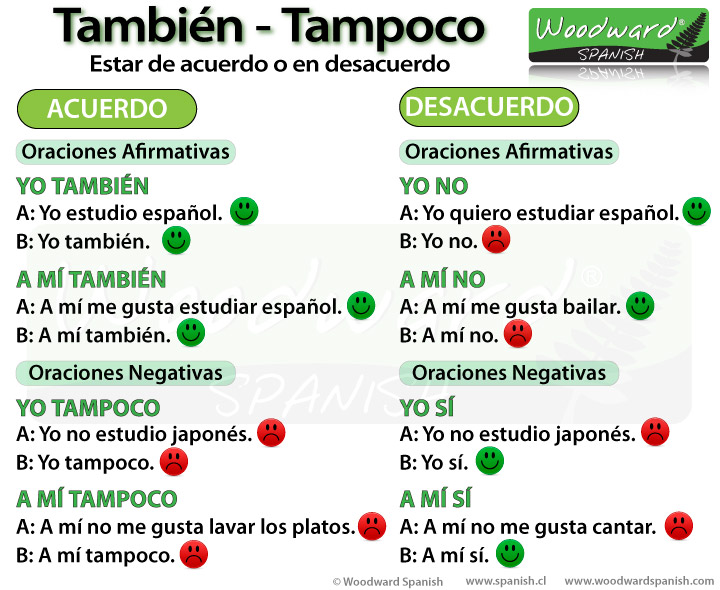One of the easiest ways to agree with someone in Spanish is by using TAMBIÉN or TAMPOCO.
También normally means TOO (and sometimes ALSO) whereas Tampoco means NEITHER or EITHER
- Tengo hambre. (I’m hungry)
Yo también. (Me too) - No tengo hambre. (I’m not hungry)
Yo tampoco (Neither am I)
If you want to quickly say that you disagree with someone in Spanish, you would often use:
Yo sí or Yo no OR
A mí sí or A mí no
depending on the verb that is used in the first person’s statement (and if it is the verb Gustar or not).
- Tengo hambre. (I’m hungry)
Yo no. (I’m not) - No tengo hambre. (I’m not hungry)
Yo sí (I am)
- Me gustan las manzanas. (I like apples)
A mí no. (I don’t) - No me gustan las manzanas. (I don’t like apples)
A mí sí (I do)
See our Spanish grammar pages for a more detailed explanation of the use of También vs Tampoco in English
Or if you’d like to read about it in Spanish, check out: También vs Tampoco en español
Remember, we also have an interactive game to practice the difference between También and Tampoco.
Spanish Teacher Resources
We have created worksheets in Spanish to practice the difference between también and tampoco when agreeing or disagreeing with what someone has said. We also look at Yo sí, Yo no and A mí sí, A mí no (with the verb Gustar).
This pack also contains a full page color version of the chart below which you can use in class along with small photocopiable (b&w) versions.
SUMMARY CHART

